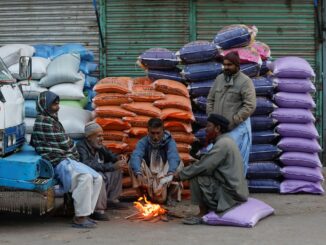
The Tipping Point is a theory, made famous by Malcolm Gladwell in his book of the same name. The idea is that there comes a point after which “an idea, trend, or social behavior crosses a threshold, tips, and spreads like wildfire”.
While he explains it in a different context, the idea can easily be implemented in the realm of economics as well. With people in Pakistan killing themselves over unprecedented electricity bills that comes at a time when unemployment is high while inflation is unparralled to any time in recent history, we seem to be nearing the proverbial Tipping Point, where things might fall into complete chaos.
Electricity prices in Pakistan have increased over 90 percent in last 4 years. My bill registered an increase of 100 percent on MoM basis. Out of the total 5 components in which an electricity bill can be divided (namely: capacity charges, energy costs, taxation, distribution costs and others) taxation makes up 32 percent of the total tariff – we, the population, are essentially covering for the mismanagement and ineptitude of the government.
A major reason of this is the rising cost of natural gas/LNG and coal that we mostly import to make electricity. The tremors after the Russia-Ukraine war had set forces in motion that would take the prices of both of these to historic highs.
Unfortunately for Pakistan, we import 25-30 pc of LNG/gas and 75 percent of coal for the purpose of electricity production. A rising dollar, rising interest rates, combined with highly inept and delayed policy making in our country has transformed into a monster with its teeth increasing by every passing day.

Income levels in the country have either stagnated and mostly decreased in the previous years. According to Steven Hanke of the Johns Hopkins University, the real rate of inflation in Pakistan is somewhere near 50 percent (double than the government quoted figures) and it also feels the right one given how drastically our purchasing power has vanished.
The vulnerabilities are accumulating such as widening of wealth gaps, rising food insecurity and a severe cost of living crisis. That is the first stage in nearing the Tipping Point. Then all is needed is a Triggering point and at this stage we do not have a shortage of that.
In my personal opinion it would be the worsening food crisis that would exacerbate our cost of living crisis morphing it into a something no one could imagine. The negative feedback loop will affect social life, individuals and companies both which will leave a dent on the overall confidence of our economy – something already happening – which can subsequently adversely effect of balance of payments and value of rupee (which seems to be in a free fall). The complex system of the global economy works in a highly strange manner. The butterfly effect is real. Polycrisis nurtures in Pakistan.
One of the key features about the complex systems (such as economy or food) is that once it is disturbed it cannot be reversed.
Ray Dalio, author of the Changing World Order, neatly describes this cycle in a different manner. Pakistan at the moment seems to be stuck at 5th point. The next one is becoming a possibility.

New economic toolkit
It is interesting to see that placards in the ensuing protests reading: “Reduce Unemployment”.
Traditional economic tools promote the exact opposite i.e. to raise the unemployment rate by increasing interest rates.
The belief that traditional economic thinking has been rendered void in the chaotic contemporary world seems to be bolstering. Pakistan is facing a stagflationary cycle and last time when it happened in 1970s it turned the conventional economic thinking on its head. For countries like Pakistan the dilemma lies in the import-led growth model.
For every dollar we export there is half a cent of imported item in it. The claim that our exports will soon hit $80 billion is only delusional.
With the current energy crisis, our manufacturing industry is almost on the brink of default. Last year 20 out of 22 LSM sectors posted declines in double digits. Now the International Monetary Fund (IMF) Stand-By Arrangement (SBA) mandates the government to curtail their deficit which can be done in two ways – by increasing revenue (through taxes) and curbing expenditure.
That is the definition of a contractionary fiscal policy (AKA budget) and an economy by definition cannot grow under such a policy orientation. With interest rates at the highest point ever, the monetary policy is also highly contractionary. How can we assume the country will grow under these policy directions?
There is a need to discard conventional economic thinking and move away from the world of isms/ists and etc. We need to take a page from Chinese handbook of economic progress the cornerstone of which is peace, stability and certainty. Once these are in place there is a dire need to take pragmatic measures to stop this negative feedback loop reach the Tipping Point from where there is no coming back.
Source: Brecorder.com
ENB Top News
ENB
Energy Dashboard
ENB Podcast
ENB Substack



